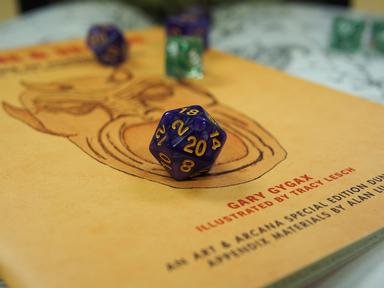Quiz Answer Key and Fun Facts
1. Each of the BECMI box sets focuses on a particular theme. The Basic Set focused on dungeon crawling, while the Expert Set focused on wilderness adventures. Considering that the Companion Set is for moderately higher-level characters, what does it particularly focus on?
2. The Companion Set introduces several optional weapons not available in the Basic and Expert sets, that have certain special effects. Of the following weapons, which one is primarily used to knock someone unconscious?
3. The Companion Set provides detailed rules for unarmed combat in the form of striking and wrestling. Striking may be used to attempt to stun or knockout an opponent. According to the rules, which of the following types of creatures would be totally immune to the effects of striking?
4. The Companion Set introduces the Druid as a subclass of cleric. Druids gain new spells that clerics do not have access to. Can druids also Turn Undead like clerics can?
5. The Companion Set describes several options for fighters who do not wish to become dominion rulers but prefer to be travelers. A chaotic wandering fighter who allies with a chaotic clerical order is known by what title?
6. The Dungeon Masters section of the Companion Set lists several methods by which a player character may become a ruler of a dominion. In which method is the character invited by others (either peasants or rulers) to rule over them?
7. Rulers of dominions may choose to hold Tournaments (Tourneys) involving jousting knights. An optional rule is given that player characters who win several Tournaments may be awarded certain titles. What suggested title would be awarded to the winner of 10 Tournaments?
8. The Companion Set notes that land-owning magic-users who build or seize a tower are commonly known as wizards, whatever their actual title may be. What title would be given to a traveling magic-user without a tower?
9. The Companion Set provides detailed information about demi-human clans. Each demi-human clan will have a sacred item called a "Relic" kept in the center of the clan's stronghold and carefully tended. Among its various powers, a Relic has what useful ability to protect the clan stronghold that operates automatically?
10. "The War Machine" is the name for a system of rules for handling mass combat explained in the Companion Set. This involves calculating a battle rating for each army involved in combat based on a variety of factors and comparing who has the higher rating. A key component of the battle rating is the basic force rating. Which of the following is NOT one of the components of the basic force rating?
11. The Dungeon Master's section of the Companion Set has extensive information on many types of magic items not appearing in previous sets. What happens to a ring of life protection when it loses all its charges?
12. One of the more unusual magic items described in the Companion Set is the "Finger Nail." It looks like an ordinary iron nail but when commanded to function produces a special effect. Is this effect one that most characters would want to use?
13. According to the Companion Set, which race would have the shortest maximum lifespan, and which would have the longest maximum lifespan?
14. The Companion Set introduces the concept of the multiverse and interplanar travel. Certain spells designed for use on the prime material plane may have no effect or work differently on other planes. Which of the following spells would continue to work normally if cast on the ethereal or elemental planes?
15. The Beholder is an original and classic Dungeons & Dragons monster that is introduced into the BECMI rules by the Companion Set. In appearance it is a large floating ball with a large central eye and 10 lesser eye stalks. What effect does the central eye have?
Source: Author
agentofchaos
This quiz was reviewed by FunTrivia editor
WesleyCrusher before going online.
Any errors found in FunTrivia content are routinely corrected through our feedback system.
